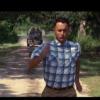uhhhh...no, that's not my position. I did not state it clearly, sorry for that (former girlfriends can go on at great lengths on this ability). I was thinking about physical evidence. Tracks, scat, hair and especially trail camera photos. Field biologists, to the best of my knowledge (which could be limited) have not identified clear physical evidence that a bipedal ape occurs in North America. The contention here is that bigfoot has not been "discovered" by biologists because of a lack of funding and interest. I contend that there are many well funded projects in what is considered prime bigfoot habitat and that none of these projects have documented a population of bipedal apes. While said projects are not specifically looking for bipedal apes my opinion is that the methods they use would identify the existence of such a population. This would then lead to specific studies (vast understatement) on bigfoot. To illustrate my point, please punch this title into google: "Differential Use of Trails by Forest Mammals and the Implications for Camera-Trap Studies: A Case Study from Belize" They talk about trail width, age and seasonality being very important for photo rates of jaguars and pumas and their prey species, Jaguars and many prey species are much more likely to move off trail or only across trails than pumas. So the photo rates of jaguars/prey species, when trail cameras are only placed on trails, will not be indicative of the number that are actually there. However the trail cameras still document that jaguars and prey species are present. I feel that while inidiviuals can hide, populations cannot. I honestly would love to be wrong about this and have an ape population in North America.



